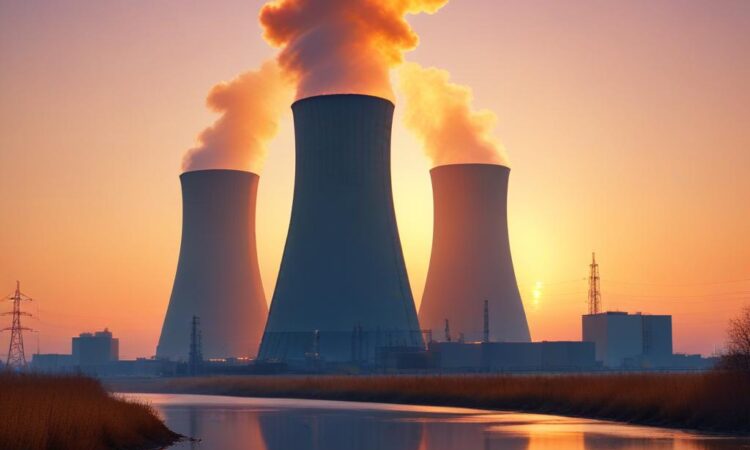UK to Make it Easier to Build Nuclear Reactors
The process of loosening rules on where reactors could be built began under the previous government. This significant policy shift aims to accelerate the development of nuclear energy within the United Kingdom, addressing concerns about energy security and the nation’s commitment to reducing carbon emissions. The move has generated considerable debate, with proponents highlighting the potential for clean energy generation and job creation, while opponents raise concerns about safety, environmental impact, and the long-term costs associated with nuclear power plants.
The existing regulatory framework surrounding nuclear power plant construction in the UK is notoriously complex and time-consuming. This has historically led to delays and cost overruns in projects, making it challenging to bring new nuclear capacity online. The government’s intention is to streamline the planning process, potentially by identifying suitable sites in advance and establishing clearer guidelines for environmental assessments and public consultations. This proactive approach could significantly reduce the bureaucratic hurdles currently faced by developers.
One of the key arguments in favor of easing restrictions is the urgent need to diversify the UK’s energy supply. The country’s reliance on fossil fuels has made it vulnerable to price volatility and geopolitical instability. Nuclear power, with its consistent and reliable output, is seen as a crucial component of a more resilient energy mix. Furthermore, the government’s commitment to achieving net-zero carbon emissions by 2050 necessitates a substantial shift towards low-carbon energy sources, and nuclear power plays a vital role in this transition.
However, the move to simplify the planning process hasn’t been without its critics. Environmental groups have expressed concerns about the potential impact of nuclear power plants on local ecosystems and the long-term storage of radioactive waste. These concerns are not unfounded, and the government needs to address them effectively through robust environmental impact assessments and transparent public consultations. The successful implementation of this policy hinges on striking a balance between accelerating development and ensuring the highest standards of safety and environmental protection.
The economic implications of the policy change are also subject to considerable debate. While proponents argue that new nuclear power plants will create jobs and stimulate economic growth, critics question the cost-effectiveness of nuclear power compared to renewable energy sources. The upfront investment required for nuclear power plants is substantial, and the long-term operational costs need to be carefully considered. A comprehensive cost-benefit analysis is essential to determine the overall economic viability of this approach.
Furthermore, the public perception of nuclear power remains a critical factor. The legacy of past incidents, such as Chernobyl and Fukushima, has instilled a degree of apprehension in some segments of the population. To ensure the successful implementation of this policy, the government needs to engage in extensive public education campaigns to address concerns and build public trust. This includes providing clear information on safety measures, waste management strategies, and the overall benefits of nuclear power.
The government’s plan to expedite the construction of nuclear reactors reflects a strategic shift in energy policy. The aim is to ensure energy security, reduce carbon emissions, and stimulate economic growth. However, the success of this initiative depends on addressing concerns about safety, environmental impact, and public acceptance. Careful planning, transparent communication, and robust regulatory oversight are crucial to ensure that the benefits of increased nuclear power generation outweigh the potential risks.
The proposed changes to the planning regulations are likely to involve a multi-faceted approach. This could include streamlining the environmental impact assessment process, establishing clear criteria for site selection, and improving communication with local communities. The government may also consider offering incentives to developers to encourage investment in nuclear power projects. This could include tax breaks, guaranteed contracts, or other forms of financial support.
The long-term implications of this policy shift remain to be seen. The success of the initiative will depend on various factors, including technological advancements in nuclear reactor design, the availability of skilled labor, and the overall political and economic climate. It’s crucial to monitor the progress of this policy closely and evaluate its effectiveness in achieving its stated goals.
The debate surrounding nuclear power is complex and multifaceted, involving scientific, economic, and social considerations. It requires a nuanced approach that balances the need for clean energy with concerns about safety and environmental protection. The government’s decision to simplify the planning process is a significant step, but it needs to be implemented carefully and transparently to ensure its success.
This policy change is expected to generate considerable debate and scrutiny in the coming months and years. The government will need to engage constructively with stakeholders, including environmental groups, local communities, and industry representatives, to address concerns and ensure the sustainable development of nuclear power in the UK.
The government’s commitment to achieving net-zero emissions necessitates a diversified energy mix, and nuclear power is likely to play a significant role in achieving this goal. However, this requires a careful balancing act, ensuring that the benefits of nuclear energy are realized while mitigating potential risks and addressing public concerns.
Further details regarding the specific changes to the planning regulations are expected to be released in the coming weeks. These details will provide a clearer picture of the government’s approach and the potential impact on the nuclear power industry in the UK.

